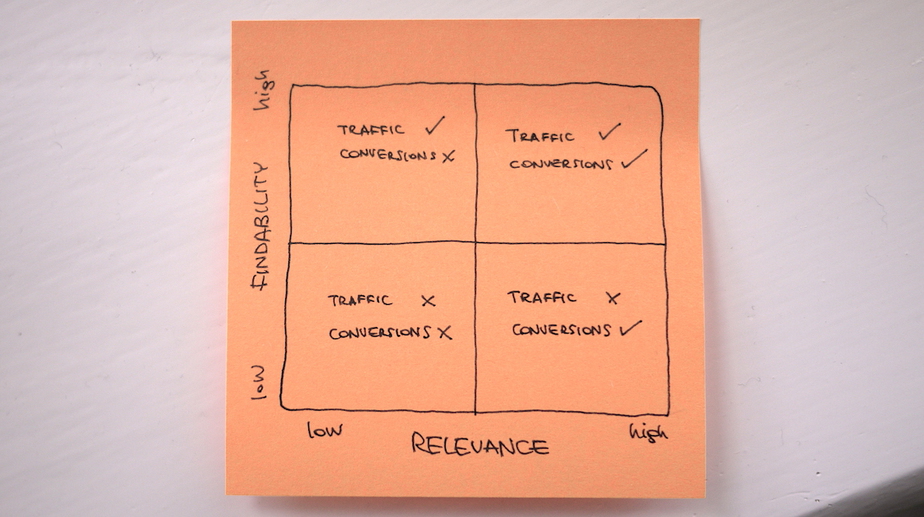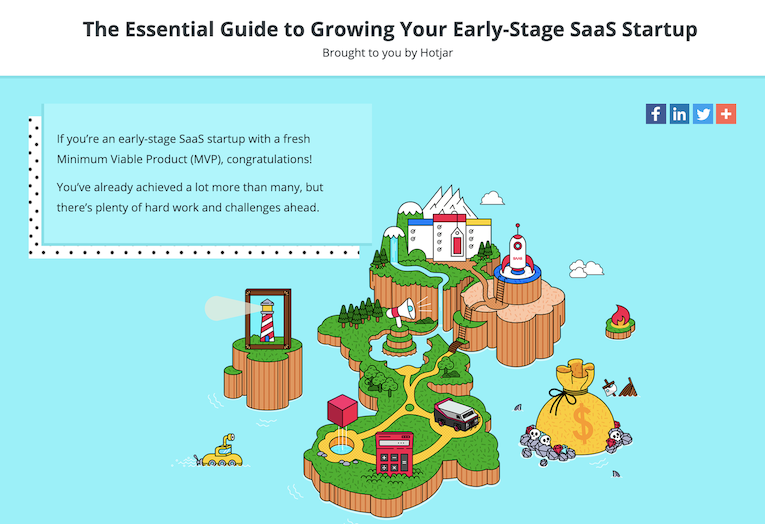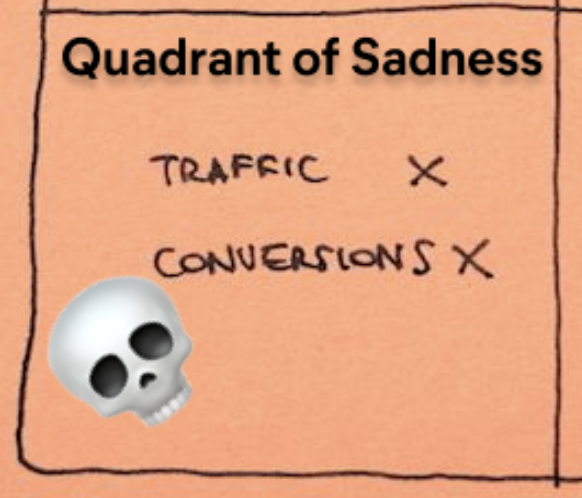
Welcome to contentfolks—a fortnightly newsletter with short lessons & ideas about content that makes a difference, sparks action, and truly serves its audience. Thank you for being here!
Hey 👋
Sometimes, you’ll be there doing a great job of consistently publishing well-written, well-designed content… but your manager/client will look at business results, declare “content marketing isn’t working,” and pull the plug.
I have a theory about why this happens.
The findability/relevance matrix
Content marketing can be defined as the process of creating and distributing content to attract and retain customers and ultimately increase revenue. But it’s not unusual for content teams to get so caught up in the frenzy of creation they don’t pay enough attention to the middle part of the definition: “distributing content to attract and retain customers.”
What this leads to:
- Findability issues: the team publishes content without first considering how potential and existing customers might find it → time and effort are wasted on content nobody sees
- Relevance issues: the team publishes content without making sure it is what potential and existing customers are interested in/need → time and effort are wasted on content aimed at the wrong audience
You can map the relationship between findability and relevance on this 2×2 matrix:

High findability, low relevance → content brings traffic but low conversions because it’s easy to find but largely irrelevant to target customers
High relevance, low findability → content converts well because it’s relevant to target customers, but it’s not distributed across channels they normally use so only a fraction finds it
Low findability, low relevance → somebody’s going to get fired
High findability, high relevance → 📈 💰 🎉
[Note: in this matrix, the word ‘conversions’ applies to anything that can directly impact a business and affect its financial outcomes: product sign ups, purchases, expansions, etc.]
Content marketing programmes fail if you don’t have content/market fit
In the world of startups, the concept of product/market fit describes the stage when a startup has identified a good market and is offering a product that can satisfy it. Oversimplifying things a lot, startup failure is often linked to a lack of product/market fit.
Likewise, the failure of a content marketing programme might be connected to its lack of content/market fit—meaning: the content a company creates doesn’t satisfy the customers it’s trying to attract, whether because the content doesn’t reach them (findability), doesn’t fit their needs (relevance), or both.
💡A practical example 💡
A few days ago, I saw this example of what the lack of customer/content fit may look like:

This reminded me of something we did in our early content days at Hotjar. Back in 2017, we launched a comprehensive guide about and for early-stage SaaS startups that was thoroughly researched, looked amazing, made #1 on ProductHunt on launch day, was widely shared, ranked well within a few months, and brought us traffic:

Was Hotjar’s target customer an early-stage SaaS startup, though? Not really, which placed this guide in the high findability, low relevance quadrant. Eventually, we learned to invest the same love, research, and work into topics that more closely related to our target customers, making our way into the high findability, high relevance quadrant of written content… and then staying there for a long time 🔥
Do YOU have content/market fit?
If you find yourself trapped in an ATM vestibule,*** erm, trapped in an under-performing content marketing programme, the findability and relevance matrix is a good starting point for determining if your problem is lack of content/market fit.
First, you should identify the type(s) of content that fall into your company’s low findability, low relevance quadrant and make sure you a) stop creating them and b) investigate what to do with them, e.g. optimise, redirect, delete, etc.
Then, you can run research to get insight into your content’s findability and relevance, such as:
- What industry-relevant publications do existing customers follow?
- How do they go about finding solutions to their problems?
- What communities are they in?
- Who do they respect in their industry?
- How did they first hear about our business?
If you want to hear from other content marketers and strategists, I recommend checking out this LinkedIn thread where I asked people to poke holes in my relevance/findability matrix—and wow, did they deliver. Ryan Law from Animalz even came up with the perfect nickname for the infamous bottom left quadrant:

It’s funny because it’s true!

***in case you’re wondering if I’ve lost my mind, the “trapped in an ATM vestibule” line is a nod to the Friends reunion happening on May 27 😉